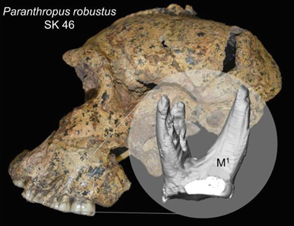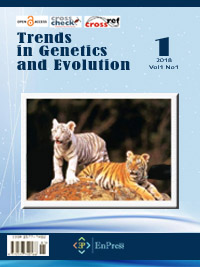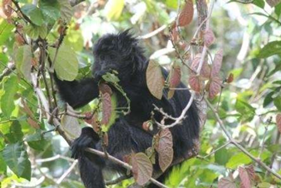2578-1707 (Online) Journal Abbreviation: Trends Geneti. Evolu. | Trends in Genetics and Evolution (TGE) is an open access double-blind peer-reviewed online journal. TGE is devoted to studying the origin, evolution, gene and genome structure, function, evolution, and regular pattern of organisms. It involves various biological fields, such as viruses, microorganisms, animals, and plants, covering the cellular basis of molecular genetic material, the genetic pattern of genetic material, the molecular basis of genetic material, biological variation and evolution, etc. It includes interdisciplinary research, such as cell engineering, genetic engineering, bioinformatics, molecular genetics, molecular biology, epigenetics, medical genetics, quantitative genetics, population genetics, cytogenetics, functional genomics, etc. |
Online Submissions
Registration and login are required to submit items online and to check the status of current submissions.
Already have a Username/Password for Trends in Genetics and Evolution?
GO TO LOGIN
Need a Username/Password?
GO TO REGISTRATION
Submission Preparation Checklist
As part of the submission process, authors are required to check off their submission's compliance with all of the following items, and submissions may be returned to authors that do not adhere to these guidelines.
- The submission has not been previously published, nor is it before another journal for consideration (or an explanation has been provided in Comments to the Editor).
- The submission file is in Microsoft Word format.
- Where available, URLs for the references have been provided.
- The text adheres to the stylistic and bibliographic requirements outlined in the Author Guidelines, which is found in About the Journal.
- If submitting to a peer-reviewed section of the journal, the instructions in Ensuring a Blind Review have been followed.
Privacy Statement
The names and email addresses entered in this journal site will be used exclusively for the stated purposes of this journal and will not be made available for any other purpose or to any other party.
Article Processing Charges (APCs)
Trends in Genetics and Evolution is an Open Access Journal under EnPress Publisher. All articles published in Trends in Genetics and Evolution are accessible electronically from the journal website without commencing any kind of payment. In order to ensure contents are freely available and maintain publishing quality, Article Process Charges (APCs) are applicable to all authors who wish to submit their articles to the journal to cover the cost incurred in processing the manuscripts. Such cost will cover the peer-review, copyediting, typesetting, publishing, content depositing and archiving processes. Those charges are applicable only to authors who have their manuscript successfully accepted after peer-review.
| Journal Title | APCs |
|---|---|
| Trends in Genetics and Evolution | $800 |
We encourage authors to publish their papers with us and don’t wish the cost of article processing fees to be a barrier especially to authors from the low and lower middle income countries/regions. A range of discounts or waivers are offered to authors who are unable to pay our publication processing fees. Authors can write in to apply for a waiver and requests will be considered on a case-by-case basis.
APC Payment
Payments for APC of this journal can be made through our online PayPal payment gateway. Enter the article no. into the below textbox and select "Pay Now" to proceed with payment.
*Article No. is mandatory for payment and it can be found on the acceptance letter issued by the Editorial Office. Payment without indicating Article No. will result in processing problem and delay in article processing. Please note that payments will be processed in USD. You can make payment through Masters, Visa or UnionPay card.
Vol 6, No 1 (2023)
Table of Contents
Announcements
Research News: Section Collection Project Welcome Submissions |
|
The SE project promoted by the journal is waiting for you who shine brightly in every Section. |
|
| Posted: 2023-08-07 | More... |
Research News: Why leaf-eating Asian monkeys do not have a sweet tooth |
|
Asian colobine monkeys are unable to taste natural sugars, and in fact have a generally poor sense of taste. This is according to research led by Emiko Nishi of the Primate Research Institute of Kyoto University in Japan. Nishi and her colleagues found that the receptors on the tongues of colobine monkeys do not function in the same way as for fruit-eating monkeys, who are sensitive to sweet tastes. The study is published in the Springer Nature branded journal Primates, which is the official journal of the Japan Monkey Centre.
This is a monkey feeding. Credit: Copyright Yamato Tsuji |
|
| Posted: 2018-09-12 | More... |
Research News: Getting to the roots of our ancient cousins' diet |
|
 Paranthropus robustus fossil from South Africa SK 46 (discovered 1936, estimated age 1.9-1.5 million years) and the virtually reconstructed first upper molar used in the analyses. Credit: Kornelius Kupczik, Max Planck Institute for Evolutionary Anthropology |
|
| Posted: 2018-09-12 | More... |
| More Announcements... |

 ISSN:
ISSN: Open Access
Open Access

